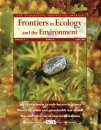 During her first visit to Puerto Williams this week, President Michelle Bachelet spent the day reviewing public work projects in the town before embarking with the navy to visit Cape Horn.
During her first visit to Puerto Williams this week, President Michelle Bachelet spent the day reviewing public work projects in the town before embarking with the navy to visit Cape Horn.
After inaugurating the new public nursery school, masters students from the University of Magallanes presented the Minister of Education Yasna Provoste and the National Director of the JUNJI (the state-supported nursery school system) Estela Ortíz with gifts that included the books and educational materials that researchers of the Omora Park (Institute of Ecology and Biodiversity and University of Magallanes) have prepared in conjunction with the local teachers for pre-school children.
In the afternoon, before embarking for Cape Horn, Drs. Ricardo Rozzi, Francisca Massardo and Christopher Anderson were asked by Congresswoman Carolina Goic to present the President, the head of the Chilean Navy Admiral Rodolfo Codina, and Rear Admiral Felipe Ojeda with these educational materials, plus ecotourism guide books and other publications produced by the scientists of the Cape Horn Biosphere Reserve.
At the meeting with the president, the researchers explained the importance of the Omora Park as a long-term ecological study site, as well as the urgent need to continue implementing the Cape Horn Biosphere Reserve as a model of sustainable development being created “from the South”.
President Bachelet received the ad hoc class with enthusiasm, showing her own knowledge of important issues in the archipelago, such as invasive species, and was very pleased to find out that this was one of the research groups to recently receive the “Fondos Basales” award through the Institute of Ecology and Biodiversity, which will help consolidate the infrastructure, investigation and outreach activities that are being conducted in the region, thus reenforcing this long-term, world class initiative.
As Dr. Rozzi explained to President Bachelet, “We are working so that the Omora Park will be to the Cape Horn Biosphere Reserve what the Darwin Station has been to the Galapagos Islands Biosphere Reserve, providing a critical link between science and sustainable development to improve social well being and biocultural conservation.”
 Dr. Ricardo Rozzi and colleagues’ article in the April edition of Frontiers in Ecology and the Environment has already received attention in various news outlets.
Dr. Ricardo Rozzi and colleagues’ article in the April edition of Frontiers in Ecology and the Environment has already received attention in various news outlets. 







